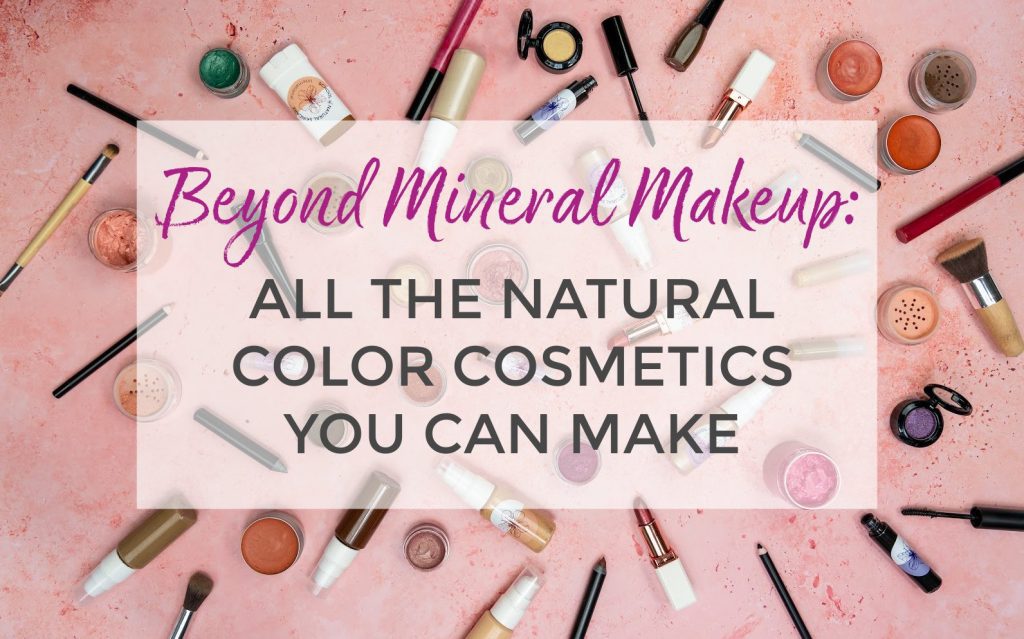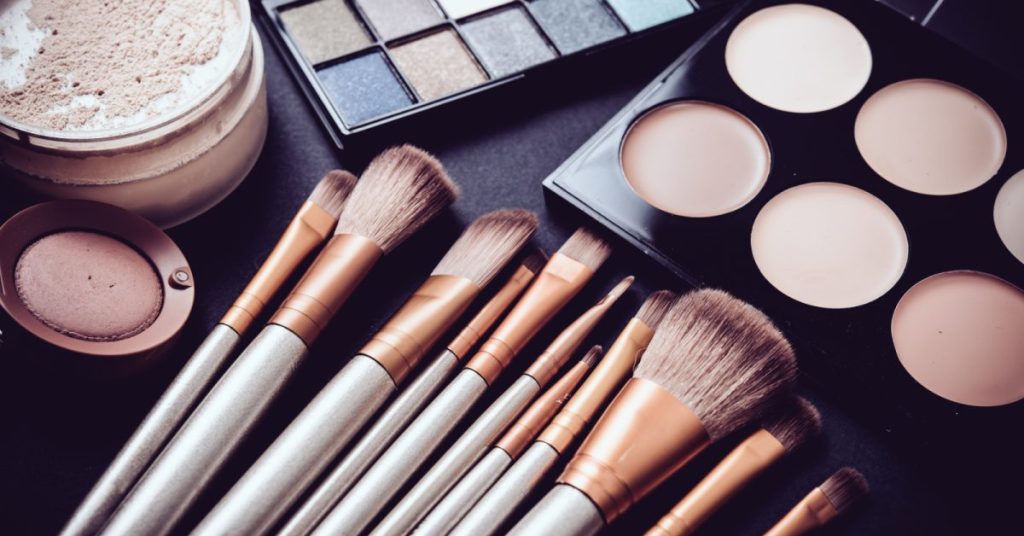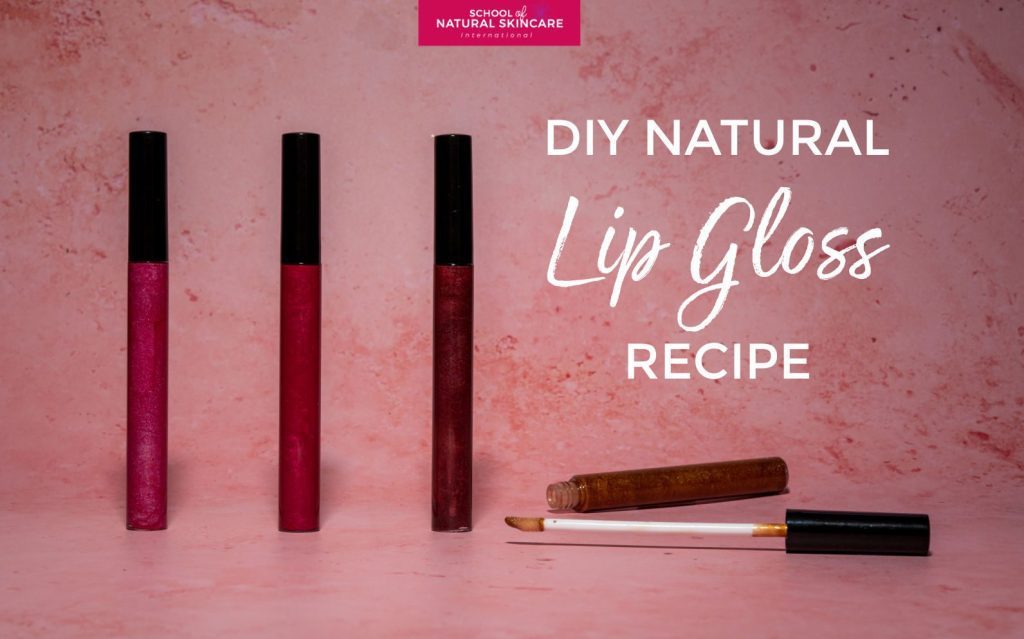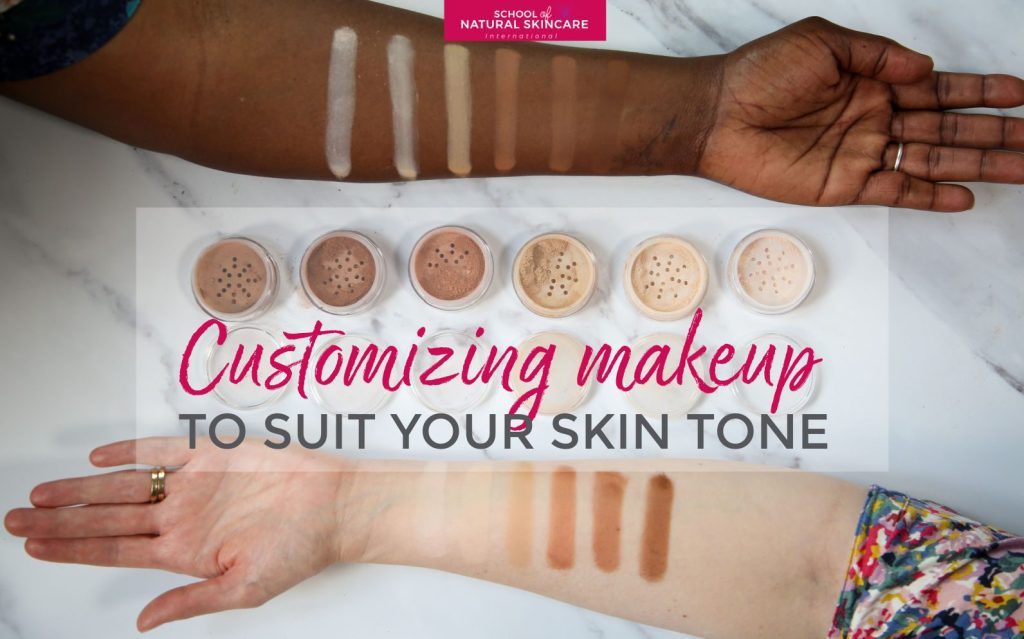Mineral makeup is a wonderful place to start when you are new to formulating natural makeup products. That’s why the first part of our Diploma in Formulating Natural Makeup and Advanced Color Cosmetics is dedicated to loose and pressed mineral makeup.
The next step on from formulating mineral makeup is formulating advanced color cosmetics.
This is where you can make many different product formats including sticks, creams, pencils, mousse, balms and liquids. The variety of products also increases, for example you can make liquid eyeliner, mascara, cream concealer, full coverage foundation, lipstick and much more – all of which are covered in the second part of the course
It’s such an exciting area of cosmetic formulation, perfect for developing your formulation skills and having fun with new product types. Advanced color cosmetics can be formulated to be natural, organic and/or vegan, too.
Quick comparison between mineral makeup and advanced color cosmetics
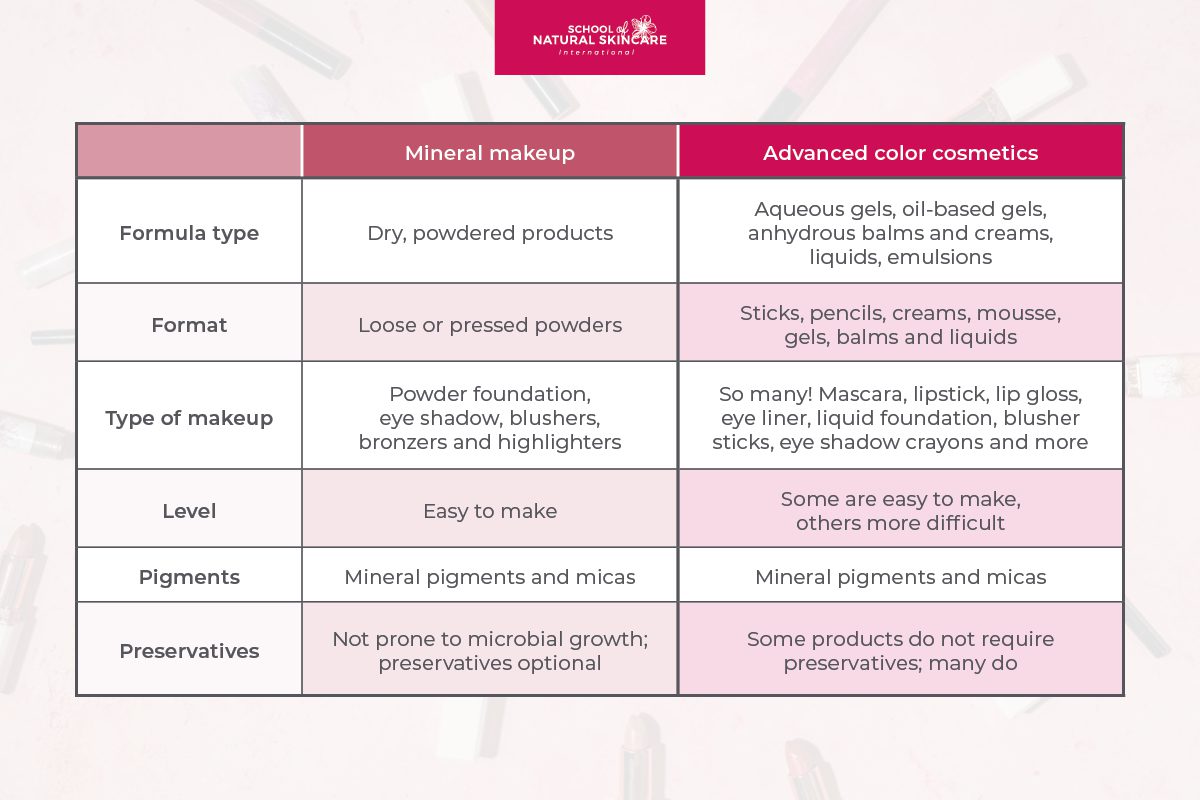
The natural advanced color cosmetics you can make
With the right know-how, you can make a complete natural color cosmetics range, including:
Lip products
- Tinted lip balm.
- Lip gloss.
- Lipstick.
- Lip liner pencils.
Eye and eyebrow products
- Cream eye shadows.
- Cream-to-powder eye shadows.
- Eye shadow crayons.
- Eye and eyebrow pencils.
- Liquid eyeliner.
- Mascara.
- Eyebrow pomade.
Foundation and concealer
- Concealer sticks.
- Cream concealer.
- Lightweight/sheer coverage foundation.
- Full coverage foundation.
Blushers, bronzers and highlighters
- Bronzer and blusher sticks.
- Cream blush.
- Mousse blush.
- Liquid highlighter.


Many products are straightforward to make, for example lip gloss, cream eye shadow, blushers and bronzer sticks. Some are emulsions so the usual process for making emulsions is followed with a couple of variations. Others require a certain technique or some practice to make, for example lip liner pencils and mascara. A few are a more advanced formula type such as full coverage foundations which are usually water-in-oil (W/O) emulsions.
Each kind of product can be made in a home lab or a kitchen, and our step-by-step videos will show you exactly how to make them.
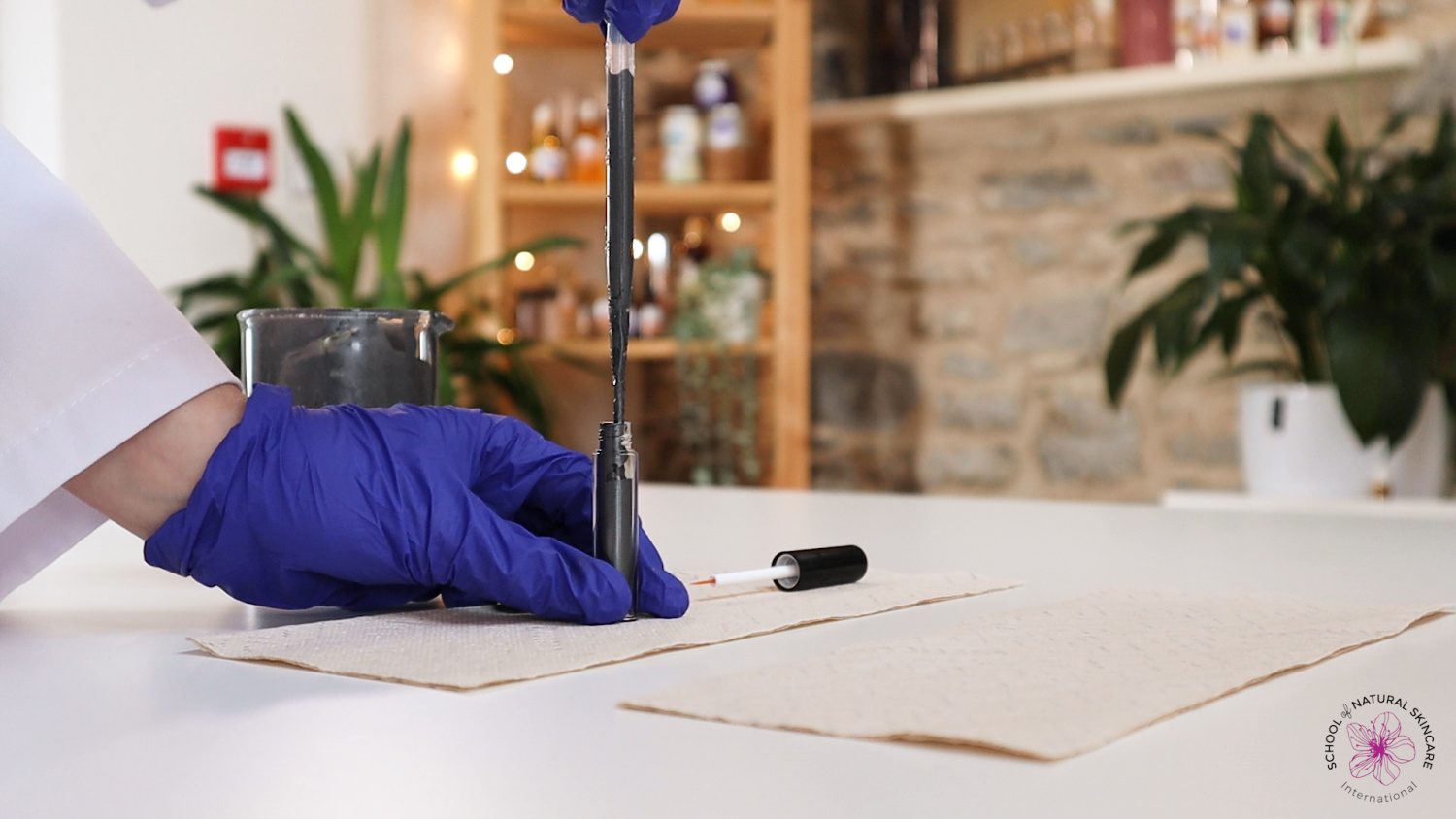
Color cosmetic product formats: Sticks, pencils, liquids and more!
One very exciting part of formulating natural color cosmetics is learning to make different product formats, some of which go beyond product formats you’ll be familiar with if you formulate skin care.
Pencils/crayons
Lip liner pencils, eye liner pencils and eyebrow pencils can all be formulated successfully at home. Special empty pencil containers are needed which can be purchased from cosmetic suppliers. A special technique is needed to fill them, using a syringe, and you need to know how to achieve the right consistency – firm enough to be solid in the pencil but with the right melting point and pigment amount to be applied smoothly, leaving a visible line.
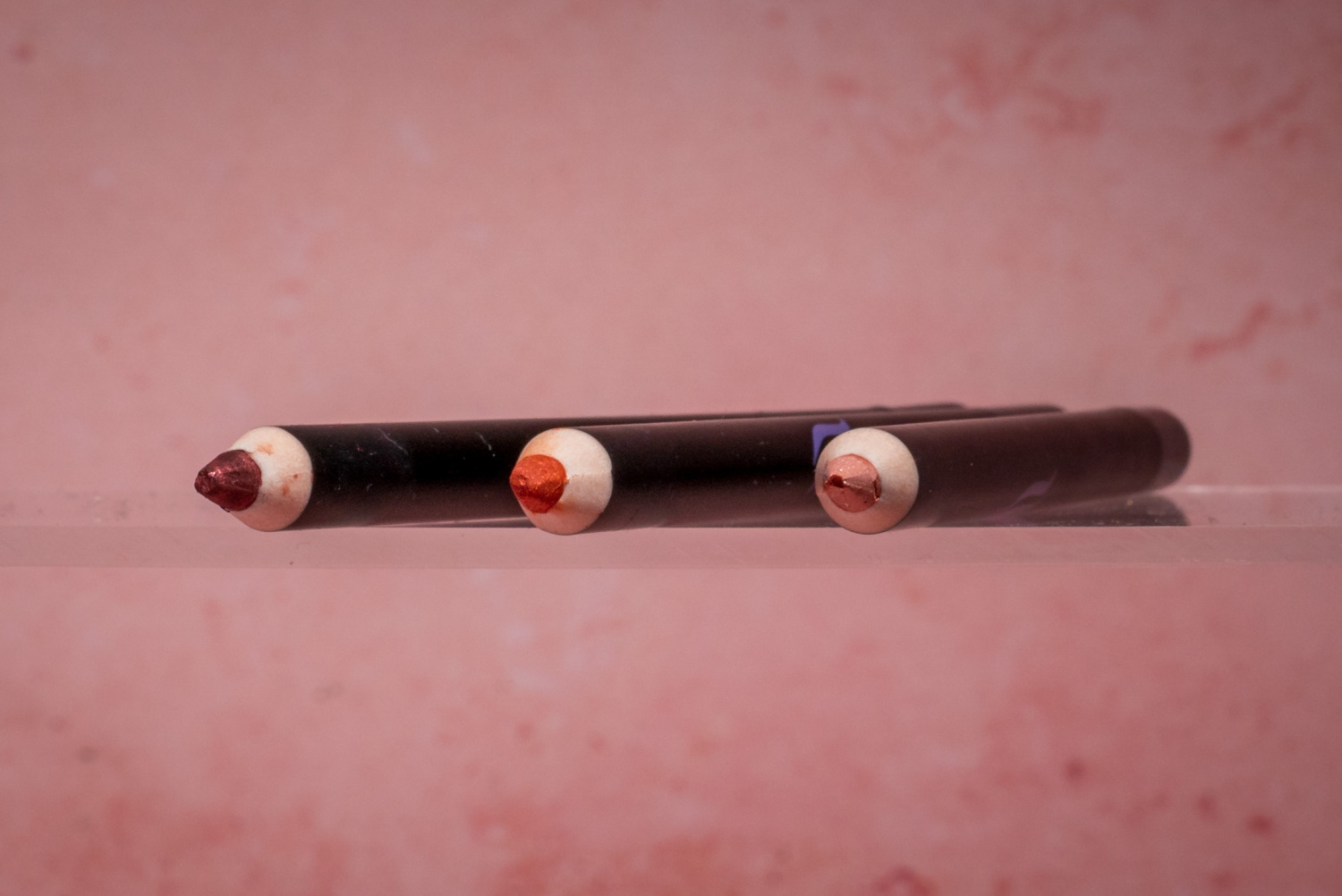
Crayons are also a fun format to create, and work well as eye shadow crayons. Empty cosmetic crayon containers can also be purchased.
Sticks
Quite a few products can be created in a stick format. Sticks are usually anhydrous formulas, similar to balms. Tinted lip balms can be packaged in lip balm twist-up sticks. Concealer sticks can use the same containers. Blushers, bronzers and multi-sticks are usually packaged in wider twist-up stick containers.
Each is made in a similar way; by pouring the hot product into the container and allowing it to cool and set. Again, getting the right firmness, melting point and pigment levels are important and will be different for different product types.
Lipsticks can be made using a special lipstick bullet mold. This is what creates their distinctive tapered end which allows for precise application.
Liquids
Highlighters, bronzers and blushers work well in a liquid format. Since they all contain insoluble pigments, the key task when creating a liquid formula is to ensure the pigment particles remain suspended in the product. The most effective way to do this is to create a low viscosity emulsion. Thickeners in the emulsion and the emulsions’ own molecular structure tend to suspend the particles rather well, even with lower viscosities.
Liquid products can be packaged in bottles with pipettes or bottles with small pump dispensers.
Liquid eyeliners are water-based gels with a thin enough consistency so that they can be applied with a fine brush. The amount of thickeners included needs to be just right to suspend the pigments (which would settle to the bottom otherwise) and give enough ‘body’ to the product so that it is easy to apply.
Creams and emulsions
Mascara as a product type is an emulsion that usually contains a high amount of waxes to make it very thick.
Foundations can be water-in-oil (W/O) emulsions or oil-in-water (O/W) emulsions. Water-in-oil emulsions are useful for creating full coverage foundation. Oil-in-water emulsions are perfect for sheer or light coverage foundation and oil-free foundations, too.
Mousse color cosmetics like mousse blush are usually high viscosity emulsions that are whipped to incorporate air bubbles into the product giving it a fluffy mouse structure.
Cream concealers are also emulsions, and can be packaged in a wand applicator for easy application.
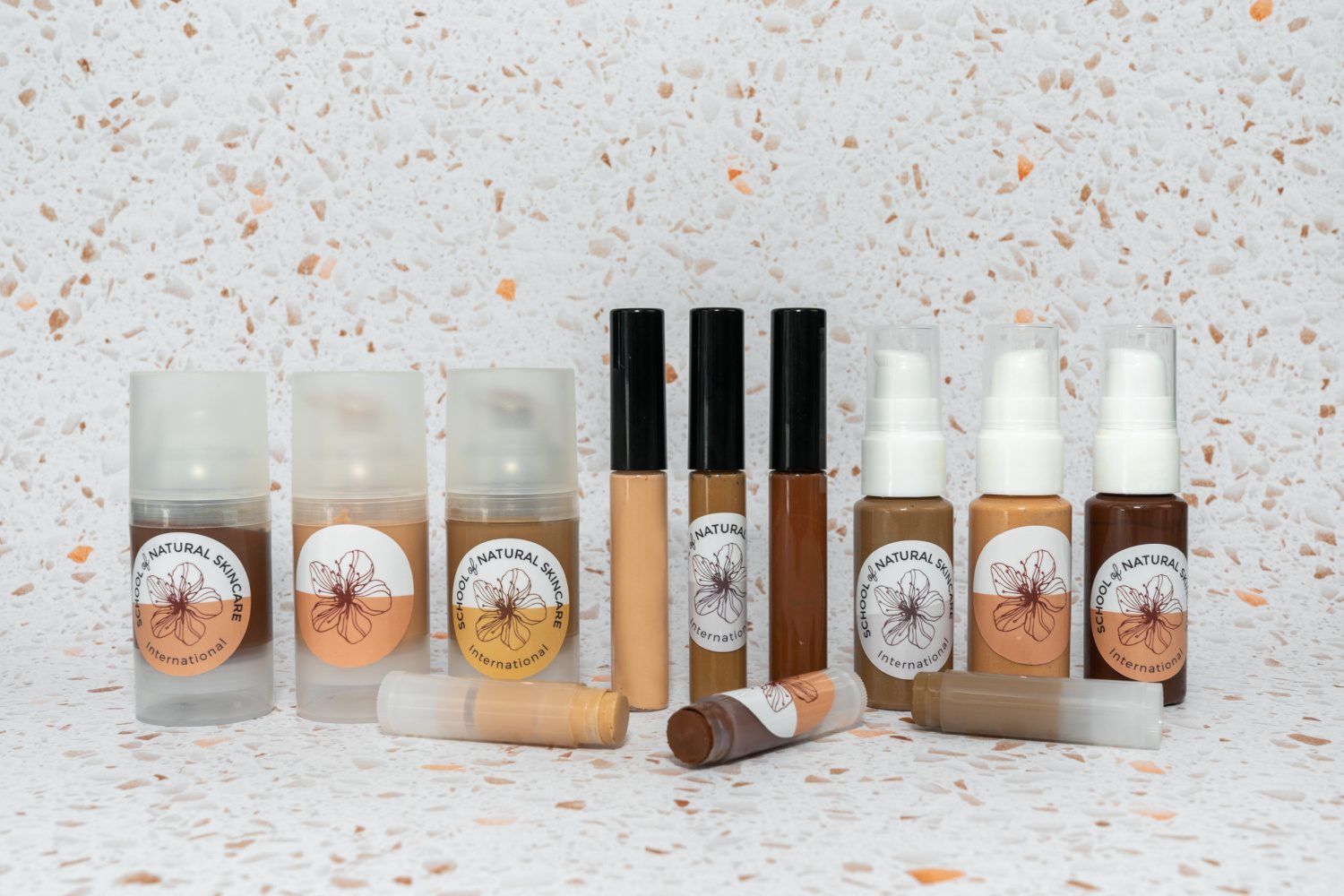
Balms, oil-based gels and anhydrous ‘creams’
Tinted lip balms are a classic example of a balm. Lipsticks, too, are a kind of balm formula, though much more heavily pigmented.
Lip gloss is usually formulated as an oil-based gel where the oils are thickened into an oily gel using lip thickeners.
In spite of their name, cream eye shadows and cream-to-powder eye shadows are both oil-based anhydrous products that come in small jars, pots or even tubes. They are normally formulated with light emollients, thickened into a balm or soft cream consistency with various thickeners. In most cases, dry, powdered ingredients can also be added to a cream eye shadow formula to reduce the oiliness of the product upon application and create a silky, soft skin feel and a cream-to-powder effect.
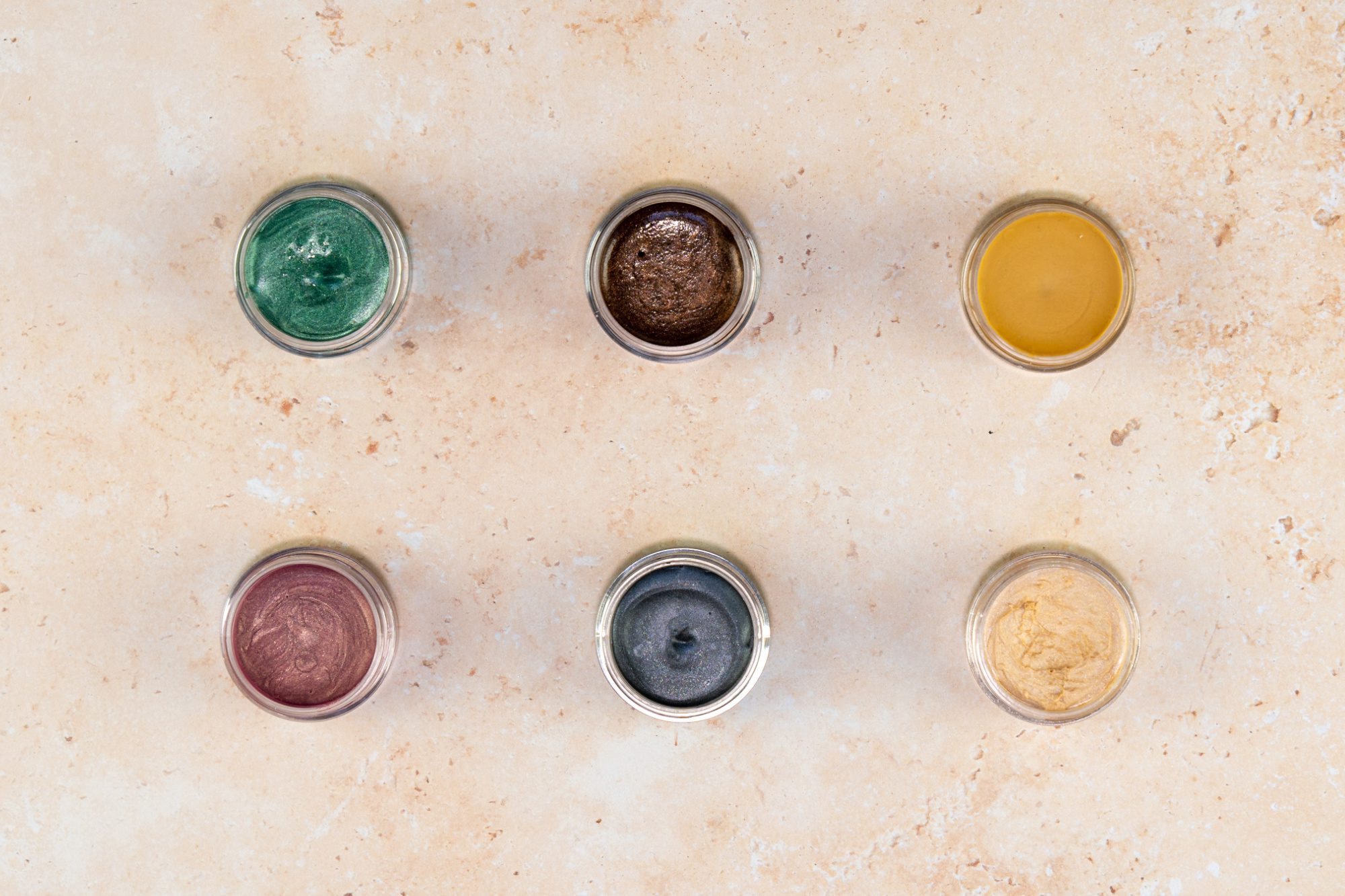
Learn to formulate your own complete range of natural makeup and color cosmetics
Our multimedia online Diploma in Formulating Natural Makeup and Advanced Color Cosmetics teaches you everything you need to know to formulate your own complete range of products using the best natural COSMOS-approved ingredients. You can create these fabulous products for yourself, family and friends or to sell, and our fabulous online course will show you how.
In fact, this is the first and only online training course that focuses on teaching you how to formulate professional standard natural and organic makeup and color cosmetics! On the course you’ll learn to:
- Formulate to organic and natural standards, such as COSMOS and Ecocert.
- Formulate vegan color cosmetics, including vegan lipstick and mascara.
- Make cosmetics in a wide range of formats, including sticks, creams, pencils, mousse, balms, liquids and powders.
- Create products with pigments and micas that provide long-lasting, stable color.
Just think, in a few months’ time you could have a complete range of products to suit your skin type, tone, needs and preferences!
You can find out more about the course and enroll here. If you have any questions, please email us on hello@schoolofnaturalskincare.com. We’re here to help and are looking forward to welcoming you.

